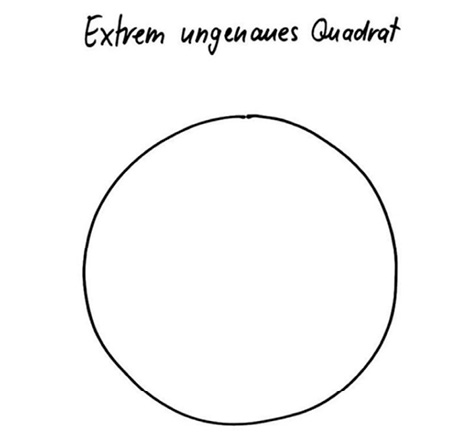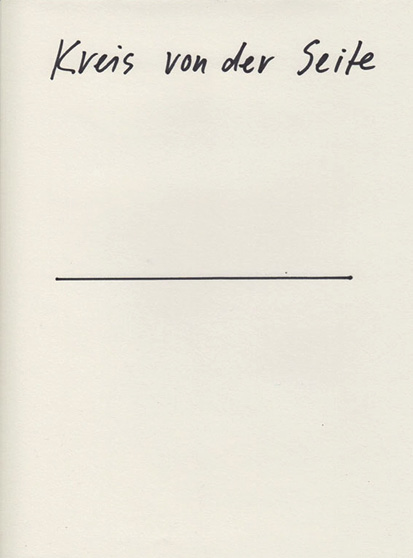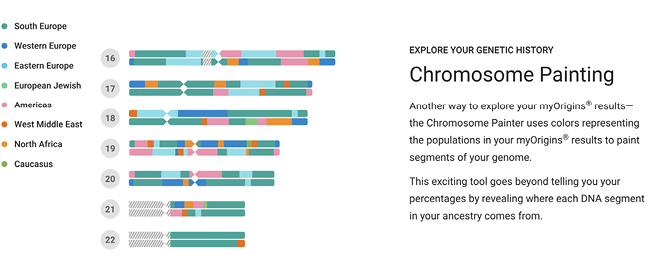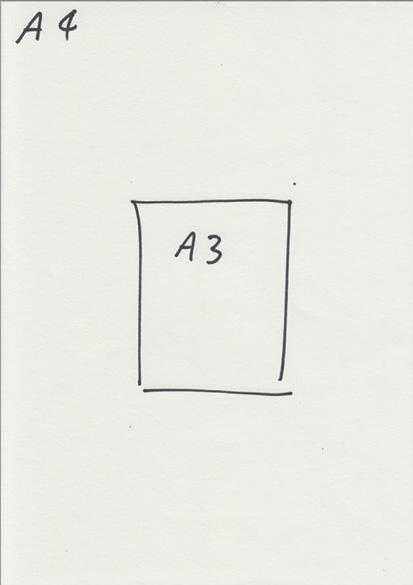Postscript
© 2024 Marianne Sommer, CC BY-NC-ND 4.0 https://doi.org/10.11647/OBP.0396.25
Diagrams have been used to relate humankind in anthropology for centuries. They have been introduced as tools to create human types and establish or deny particular relations between them. These relations have mostly been hierarchical. Diagrams have been developed as ways of sharing, measuring, and comparing human remains by representing the relations of parts on paper and for communicating results. But diagrams were also used to experiment with these relations, as when morphing one skull shape into another. Even treeing could be a largely experimental practice, which we have seen especially for Charles Darwin. At the same time, diagrams like trees and maps seem mostly to have been instruments to promote one’s view of human diversity rather than to arrive at such a view. Even in genetic anthropology, where relating diagrams may be produced automatically, the way in which computer programs were and are built largely predetermines the general diagrammatic structure of human history and diversity. Tree- and map-like images transported and transport narratives of human migration and differentiation, with or without communicating interbreeding. Diagrams have thus reduced complex theories and (even more complex histories) to seemingly intuitive icons and provided these theories with (the appearance of) objectivity, possibly as combinations of lines, images, letters, and numbers. The way this has been done has sometimes resulted in a mismatch between diagram and intended meaning.
Throughout this long history of relating diagrams, I have found no linear development, such as from chain to tree to net. There were different kinds in competition at all times and compounds of elements from various types. Trees may still transport the meaning of a progressive and lineal arrangement or evolution, while chains in natural history multiplied to form ‘trees’ and nets or other three-dimensional structures. Trees and maps were often combined, and tree-like structures incorporated network aspects. Anthropological diagrams could be inspired by religious and secular genealogies and maps, breeding pedigrees, even arbores consanguinitates, and by forms used in natural history more generally as well as in other sciences like linguistics and embryology.

Fig. P.1 ‘Extremely imprecise square’ (by Beni Bischof, reproduced in Bischof 2022, p. 117, all rights reserved, published with kind permission by the artist).
We have seen how the introduction and standardization of a diagrammatics of ‘race’ in anthropology to categorize and classify, to differentiate and hierarchically arrange humans was a long and arduous process, accompanied by controversies and failures. At the same time, we have witnessed how, once established, a diagrammatic form could survive new ways of conceptualizing human relatedness. Especially the human family tree that encompassed human diversity has been used to convey very different messages. While the tree-like diagram started out as a classificatory icon, the tree bloomed in the evolutionary paradigms, in which it could express approaches as diametrically opposed as evolutionary polygenism and human population genetics, even aDNA admixture research. At times, diagrams were referred to as trees, despite resembling bamboo stalks or a bed of flowers; indeed, ‘trees’ have come in very variable shapes – from pure line structures to naturalistic images. This relates to Charles Sander Peirce’s differentiation between token and type and the observation that we tend to read diagrams as types rather than tokens. When we perceive a geometrical figure on the blackboard, we abstract from aspects such as the breadth and color of the chalk line and from the fact that it does not run perfectly straight (Stjernfelt 2000, 366). We had to learn to grasp human relatedness as tree-shaped, but once we had learned to do so (which was a very long time ago), it became challenging to unlearn, or not to perceive a family tree even in a phylogeny that only vaguely resembles a tree.
The Swiss artist Beni Bischof has captured this phenomenon in one of his humorous drawings that is shown in Figure P.1. A circle does not have to be perfect for us to see a circle; there is no way it could be a square. Or, read differently, a square needs to be a very imperfect one indeed to become a circle. So how to unlearn? Also in this respect, we may profit from the artist’s comment in the interview that accompanied Figure P.1 among other images: “I observe my surroundings closely, question them often also visually, and play with that. Also with a point, which stands at the beginning of a drawing. A point can actually be anything” (Bischof 2022, 107, my translation).1 One is reminded of the centrality of manipulation for Peirce’s icon, with the geometrical figure as a prototype because a theorem is tested in the experimentation with the diagram (Stjernfelt 2000, 359).2 But what Bischof rather seems to suggest is that we must train ourselves in visual critique, in questioning the seemingly obvious, as Fran Ross (1974) has done with her diagrams in Oreo – with the cookie itself standing for a relating diagram. How is that achieved? Bischof proposes that “[o]ne changes the points of view, simply does the opposite for once, or questions everything, be it a point, a square, or a line” (Bischof 2022, 107, my translation).3 After all, as expressed in Figure P.2, a circle looks very different from the side.

Fig. P.2 ‘Circle from the side’ (by Beni Bischof, all rights reserved, published with kind permission by the artist).
If diagrams as naturalized and deep-rooted in our visual culture as a square or a circle can be questioned, played with, joked about, then so can a tree. This, one practices until it sticks: “Once we become aware of that [possibility], one might be able to train it. Like a muscle in the brain” (Bischof 2022, 107, my translation).4 We have witnessed critiques of the tree of human ‘races’ throughout the book and have ended with demands of the demise of the tree of human populations, even the tree of life. The human family tree has increasingly grown connecting arrows and, at least for some researchers, has been replaced by networked structures, as for Gilles Deleuze and Félix Guattari (1987 [1980]) the tree could become rhizomatic or rhizome, and the rhizome may grow branching structures or roots. It is unclear, however, what this would mean for the politics of human relatedness. Are meandering rivers, cables, entangled skeins, networks, or trellises inherently better relating diagrams in an ethical sense? Some of these diagrams have been brought in position (verbally and/or visually) against those in use in racist and polygenist anthropologies and eugenics. The deconstruction of the notion of more or less contained individuals, ‘races’, populations, and even species and their hierarchical relations, as they are communicated in trees, by some scientists today, does seem to carry subversive potential. But we should be wary of making any inferences from knowledge in the biological sciences about social relations. They have too often led astray.

Fig. P.3 “Chromosome Painting” (Family Tree DNA, screenshot of https://www.familytreedna.com/products/family-finder, last accessed 6 July 2024, with kind permission from FamilyTreeDNA).
Chromosome painting, as advertised in Figure P.3 by the genetic ancestry and wellness company Family Tree DNA, sounds like fun. The practice represents a customization of the new insights from genomics, exploiting this deconstruction of the individual as squarely fitting into one ethnicity, as having a straightforward ancestry. No, we are mosaics, like the populations we live in. But wait. We can still be reassured by the fact that the bits of our chromosomes stem from seemingly monochrome ancestral populations that are listed on the left of Figure P.3: from “South Europe” to “Caucasus”. As we have seen for scientific practice itself, so too in the popularization and commercialization of science, notions of originally pure populations that at some time in history started to interbreed continue to underly the mosaic. Even when appearing to be pure fun, relating diagrams are political.
Relating diagrams have been part and parcel of racist anthropologies and eugenics. They have been enmeshed in arguments over slavery, in justifications of imperialism, colonialism, war, segregation, and so forth. Diagrams on paper and in interaction with text have worked to provide inequality, exploitation, and violence with the veneer of inevitability. More than that, they have been built on them. Anthropologists objectified the sampled people and their communities by studying their remains, by distributing and reproducing these remains, and not least through turning them into diagrams – mobile inscriptions that reduced human beings to readable and measurable angles, proportions, and volumes. Most of all, behind the diagrams of human relatedness, whether tree or network, there remain the practices of collecting. The historian Samuel J. Redman (2016) has engaged with the demand for human remains in the United States from about the Civil War, following the pioneer plunderers who supplied Samuel George Morton and his contemporaries. Museums heaped human remains in spaces known as bone rooms, amateurs and scientists assembled them from all over the world, and the latter engaged in the project of producing seemingly natural classifications of humankind from these remains.
The Army Medical Museum was among the first museums that systematically collected human remains from the American West and globally, mainly through medical officers. This exacerbated the conflict with Native Americans, who tried to protect the bones of their ancestors and of their massacred contemporaries from ending up in a museum. At the end of the nineteenth century, the collection of the Army Medical Museum was transferred to the Smithsonian Institution, which became the primary destination for bone collectors, driven by projects of physical and salvage anthropology. This history led to a situation in which US museums were estimated to hold around half a million remains of Native Americans alone (Redman 2016; Sommer 2016b). The Washington Post has conducted an investigation into the collecting history of the physical anthropologist Aleš Hrdlička of the Smithsonian Institution’s Natural History Museum, which currently houses over 30,000 human remains. This investigation has triggered a project for repatriation (Dungca and Healy 2023).
We have seen the vital part diagrams played in the study of skulls, and that America was far from the only region where bone collections were amassed. Researchers have engaged with histories of collecting practices and collections in other parts of the world (e.g., Legassick and Rassool 2000; Buklijas 2008; Wagner 2010; Dias 2012; Stoecker, Schnalke, and Winkelmann 2013; Turnbull 2017; Wiedenmayer and Hotz 2002). And these efforts, too, went hand in hand with restitution projects. But what happened to the collection that stood at the center of Part I? In 1966, Morton’s skull collection was donated to the University of Pennsylvania Museum of Archaeology and Anthropology. In the aftermath of the implementation of the Native American Graves Protection and Repatriation Act (NAGPRA) in 1990, over a hundred skulls were restituted to Native American nations. In 2020, in the current movement of the decolonization of museums and their collections, Morton’s ‘Golgotha’, until then held in open storage, has definitively been closed to the public. This has further sparked the discussions about ethical legacies, for example in a participant observation series in History of Anthropology Review (Mitchell 2021; also, Michael 2021b):
[…] the descendant community of the Morton Collection can be said to be all those whose ancestors suffered under Western colonialism, ‘specimen’ collecting practices, and the brutality of life in the industrializing United States and elsewhere. The one thing the people in the collection had in common was their or their community’s disempowerment. (Kakaliouras, 2021, n.p.)5
This quote underscores the fact that, while diverse communities have been victims of the stealing and unethical acquisition of human remains, in the United States the NAGPRA refers to Native Americans alone. Following the decision of an advisory committee, the University of Pennsylvania Museum have reburied the remains of nineteen Black Philadelphians from the Morton collection in early February 2024. This sparked controversy, however, because the committee did not consult members of the affected Black communities. This foregrounds that more is at stake, and that more people are involved than the Native Americans to whom the over 300 remaining skulls of such an origin in the Morton collection will eventually be repatriated through federal law. The University of Pennsylvania Museum was also criticized for insufficient research into the provenance of the reburied remains. In fact, a professor at Rutgers University demonstrated that one individual had been the son of a Native American mother (e.g., Brewer 2024).
And what about blood and DNA? Researchers themselves are well aware that the collection of genetic material from living individuals, too, has grown into a political and public issue in the context of the Human Genome Diversity Project (HGDP). This does not come as a surprise in view of the fact that there are rather smooth continuities from the collection of bones and/or the photographing, fingerprinting, measuring, etc. of subjects in the field globally to the collection of blood in colonial and postcolonial contexts (e.g., Friedlaender 2009, xvi and 244; Sommer 2010b; on blood collecting see, e.g., Radin 2017; Bangham 2020). By the time of the take-off of the HGDP at the beginning of the 1990s, with Indigenous rights movements and increasing worldwide organization, research into human diversity and the preservation of bodily material from Indigenous peoples had become more problematic (for the most comprehensive account, see Reardon 2005). Despite controversies involving the collection of blood and genetic research especially surrounding the HGDP, the resulting collection is still the most complete, public, worldwide archive of human DNA. It has served as a central reference in aDNA research due to its anthropological framework, i.e., its focus on human diversity and what were considered isolated populations (Aneli, Birolo, and Matullo 2022, 4, 7). While tens of thousands of human remains have been repatriated and reburied, blood collections seem to have escaped similar large-scale attention. However, as cultural and medical anthropologist Emma Kowal (2023) documents for Australia, things may be about to change; the National Centre for Indigenous Genomics, overseen by an Aboriginal Australian majority board, was established in 2013. The board has developed a model of research governance concerning the management and use of the approximately 7,000 blood samples collected in Indigenous communities between the 1960s and 1990s.
The ethical concerns regarding aDNA studies of human evolution and kinship are possibly even more pronounced, not least because they depend on human remains. Indeed, while harboring a dream of an aDNA atlas of humanity (Reich 2019, 276–80),6 the access of scientists to archaic and ancient human remains is challenged for several reasons. The NAGPRA demands that state-funded institutions offer the return of cultural and biological remains from groups to which Native Americans can demonstrate a connection, and there are governmental restrictions on the export of samples as in the case of China and Japan – restrictions that are the result of historical expeditions from the West (e.g., Sommer 2016a, 75–82). Although scientists express understanding towards Indigenous concerns, at times one also encounters the feeling that “claims of direct ancestral links between ancient skeletons and groups living today” are “unsubstantiated” (Reich 2019, 167). Some scientists defend the access of science to human remains – hand in hand with their freedom to research and write about biological differences between the sexes and between ethnicities (Coyne and Maroja 2023).
Even if the issue of the destructive extracting of aDNA from rare and irreplaceable (sub)fossil human remains is somewhat alleviated by the new methods of gathering aDNA from sediments, ice, and lake cores (e.g., Liu, Bennett, and Fu 2022), other issues persist.7 There are significant differences in aDNA research possibilities between the Global North and South, with asymmetries in infrastructure, funding, and training opportunities that are reflected in the number of publications per world region. At the same time, researchers from the Global North continue to collect material and data in the Global South, a practice that has led to labels such as ‘helicopter science’ or ‘parachute research’. There is also the accusation of a continuation of biocolonialism (Arcos 2018). Collecting without local collaboration or acknowledgement, and disrespect for the culture and beliefs of local communities, exacerbate the situation (e.g., Orlando et al. 2021, 20; Dalal et al. 2023, 8–9). Ethical guidelines for research conceptualization, sampling strategies, communication and engagement with communities, as well as data management and stewardship have been suggested (e.g., Fossheim 2013; Wagner et al. 2020; Alpaslan-Roodenberg et al. 2021; Harney et al. 2023).
The diagrams I have treated in this book are part of the history of collecting organismic remains, with the verb ‘collecting’ being a gross euphemism for a large part of this history. And similar struggles as those surrounding collections plague the relating diagrams that are built on them. At this moment still, diagrams like those examined in Part I and beyond, and even the seemingly straightforward, harmless diagrams from human population genetics, evidence their political potential when they are leveraged to support racist statements on social media – it in fact has become clear that such diagrams are systematically weaponized by extremists in the US, even by the white supremacist who committed the Buffalo (New York) massacre in 2022, murdering ten African Americans (Carlson et al. 2022; Coghill and Hayes 2024). This has initiated a debate about what I call ‘relating diagrams’, as well as about ‘race’ and the history and politics of population labelling, within the genetic anthropology community and in the media, which reflects growing awareness of the issues involved (National Academies of Sciences, Engineering, and Medicine et al. 2023; Kozlov 2024).

Fig. P.4 A3 on A4 (or tabloid on letter) (by Beni Bischof, all rights reserved, published with kind permission by the artist)
At the same time, some of the relating diagrams I have engaged with stood for the belief in and demands for equality, justice, and democracy, and were positioned against notions of human races or even species and the politics they could entail. I therefore end with another artwork by Bischof that to me is about this experimental and subversive power of diagrams. In a diagram, there are always already alternative ways of relating at play. Diagrams may thus also challenge our engrained perspectives, evoking several viewpoints simultaneously. They also seem to represent their (re)presentational character, like an A3-sized sheet of paper (or American tabloid format) drawn on a physical paper that is defined as A4 (or American letter size): a diagram can reverse relations that are taken for granted – not only in size – and their associated hierarchy of relevance.
1 “Ich beobachte meine Umgebung genau, hinterfrage sie oft auch visuell und spiele vor allem dann damit. So auch mit einem Punkt, der am Anfang einer Zeichnung steht. Ein Punkt kann ja alles sein [...].”
2 “The truth, however, appears to be that all deductive reasoning, even simple syllogism, involves an element of observation; namely, deduction consists in constructing an icon or diagram the relations of whose parts shall present a complete analogy with those of the parts of the object of reasoning, of experimenting upon this image in the imagination, and of observing the results so as to discover unnoticed and hidden relations among the parts” (Peirce 1885, 182).
3 “Man wechselt die Ansichtsweisen, macht einfach mal das Gegenteil oder hinterfragt alles, sei es ein Punkt, ein Quadrat oder eine Linie.”
4 “Wird man sich dessen bewusst, kann man das vielleicht trainieren. Wie einen Muskel im Gehirn.”
5 See Sommer 2023a, 26.
6 There is a public data repository on the Reich Laboratory website (https://reich.hms.harvard.edu/allen-ancient-dna-resource-aadr-downloadable-genotypes-present-day-and-ancient-dna-data). Other public repositories include the Sequence Read Archive and the European Nucleotide Archive.
7 The extraction of such so-called environmental DNA (eDNA) has been identified as the only research strand that originated in the field of aDNA studies itself (Orlando et al. 2021, 17).
